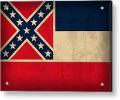

Originally Posted by
mhb

any low-numbered 1903 has to be made by the individual shooter. Ordnance determined by extensive testing that some of them are inherently unsafe because of burnt forgings and/or improper heattreatment. They also determined that there is no non-destructive way to determine which ones those are, and so condemned ALL of them. They weren't destroyed, it is true, but that has more to do with the poverty of the military structure during the period between the wars and the lack of rebuild activity. Then came WW2, and the emergency required that any available arms be issued.
None of that changes the facts about the rifles. There is no one who can tell you that any specific rifle is safe to fire, and the fact that it still exists is no indicator, either, since the recorded failures were often due to problems with ammunition - problems which the rifles were intended to survive intact, but sometimes didn't.
I've seen cartridge case failures with military, commercial and handloaded ammunition, some of which would certainly prove catastrophic in one of the affected 1903s.
So, it comes down to a cost/benefit analysis: is it worth the risk?
And I freely admit I've fired low-numbered 1903 rifles (in fact, I don't know anyone who has shot a lower number than I have - #217), but I'm under no illusion that it is perfectly safe to do so.
And those who belong to the 'Aw, shucks, I've done that a thousand times and nothin' happened' group are just angling for a spot in the next Darwin Awards.
mhb - Mike
Some have argued that the poverty of the military structure was the chief reason they were condemned. Idle hands at SA needed something to do, if they could get the national arsenal condemned that would put a lot of people back to work. The Navy and Marines never condemned theirs.
I don't shoot 36018, it has a like new 4-22 RIA barrel that gauges a perfect 0. I figure it shoots just like any of my high numbers so I leave it be, however I'm not scared to shoot it.
Last edited by PhillipM; 05-25-2013 at 12:00.
Phillip McGregor (OFC)
"I am neither a fire arms nor a ballistics expert, but I was a combat infantry officer in the Great War, and I absolutely know that the bullet from an infantry rifle has to be able to shoot through things." General Douglas MacArthur









